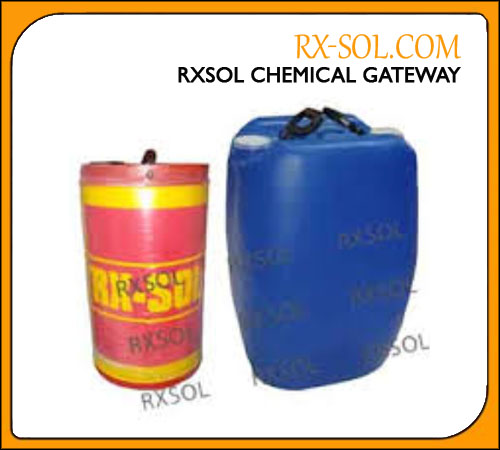Buffer Cleaner
Oman Chemical is leading one Largest Supplier, Manufacture a

It has a high electrical conductivity ( measures a material's ability to conduct an electric current ) , caused by dissociation through protonating itself, a process known as autoprotolysis
Led - ACID Battery Grade concentration,
Iorn content -less then 10 PPM
Chloride - Nil
Batteries Liquid (Electrolyte) for vehicle
MECHANISM OF OUR PURE BATTERY ACID : ( PURITY OF MATERIALS PLAYS THESE ELECTROCHEMICAL REACTION ) ----
CREATION :
A traditional lead-acid cell, when created, has both of its terminals connected to plates of an identical material: lead. This is a little counterintuitive given that most batteries rely on different metals' potential when immersed in an electrolyte. Since there is no potential between the plates themselves, and because lead is not dissolved by sulfuric acid, the cell is stable. The created battery has no charge, and no polarity.
Anode Reaction: None.
Cathode Reaction: None.
INITIAL CHARGE :
Initial charging establishes which plate will be the anode, and which the cathode. The process is driven by the forcible removal of electrons from the cathode and the forcible introduction of them to the cathode. This splits the water into Hydrogen (which bubbles and is drawn off) and Oxygen, which binds with the lead on the cathode, producing lead (II) oxide.
Anode Reaction: 2H+(aq) + 2e− → H2(g)Cathode Reaction: Pb(s) + 2H2O(l) → PbO2(s) + 2H+(aq) + 2e−
DISCHARGE :
During discharge, both plates are again returned to equal composition, but this time both plates become lead sulfate. The process is driven by the conduction of electrons from the cathode back into the cell at the anode.
RECHARGING :
Subsequent charging places the battery back in its charged state, changing the lead sulfates into lead and lead oxides. The process is driven by the forcible removal of electrons from the anode and the forcible introduction of them to the cathode.
Depends up on ELECTROCHEMICAL REACTION rate .
Measuring the charge level
A hydrometer can be used to test the specific gravity of each cell as a measure of its state of charge. Because the electrolyte takes part in the charge-discharge reaction, this battery has one major advantage over other chemistries. It is relatively simple to determine the state of charge by merely measuring the specifice gravity ( S.G) of the electrolyte, the S.G. falling as the battery discharges. Some battery designs include a simple hydrometer using colored floating balls of differing density , When used in diesel-electric submarines , the S.G. was regularly measured and written on a blackboard in the control room to indicate how much longer the boat could remain submerged.
PRECAUTION / LIMITATION / SOLUTION :
Lead-acid batteries lose the ability to hold a charge when discharged for too long due to sulfation, the crystallization of lead sulfate . They generate electricity through a double sulfate chemical reaction. lead and lead ( IV ) oxide, which are the active materials on the battery's plates, react with BATTERY ACID in the electrolyte to form lead sulfate . The lead sulfate first forms in a finely divided, amorphous state, and easily reverts to lead, lead oxide and sulfuric acid when the battery recharges. As batteries cycle through numerous discharge and charges, the lead sulfate slowly converts to a stable crystalline form that no longer dissolves on recharging. Thus, not all the lead is returned to the battery plates, and the amount of usable active material necessary for electricity generation declines over time.
Sulfation occurs in all lead-acid batteries during normal operation. It clogs the grids, impedes recharging and ultimately expands, cracking the plates and destroying the battery. In addition, the sulfate portion (of the lead sulfate) is not returned to the electrolyte as sulfuric acid. The large crystals physically block the electrolyte from entering the pores of the plates. Sulfation can be avoided if the battery is fully recharged immediately after a discharge cycle.
Sulfation also affects the charging cycle, resulting in longer charging times, less efficient and incomplete charging, and higher battery temperatures.
The process can often be at least partially prevented and/or reversed by a desulfation technique called pulse conditioning, in which short but powerful current surges are repeatedly sent through the damaged battery. Over time, this procedure tends to break down and dissolve the sulfate crystals, restoring some capacity.
Higher temperature speeds both desulfation and sulfation, although too much heat damages the battery by accelerating corrosion
Presence of CHLORIDE and other impurities in solution immediately damage ELECTROCHEMICAL REACTION of BATTERY , which may result poor performance.
Do not handle this materials without MSDS.
Battery Acid manufacturer supplier distributor in Mumbai, Kandla, Kolkata, Vizag, Chennai, India, Fujairah, Dubai UAE, Muscat Oman, Kenya Africa. Get the best quality of Battery Acid at a competitive price from us. We have ready stock of Battery Acid in India, UAE Gulf, Oman, Kenya Africa. Contact us for bulk as well as small orders.